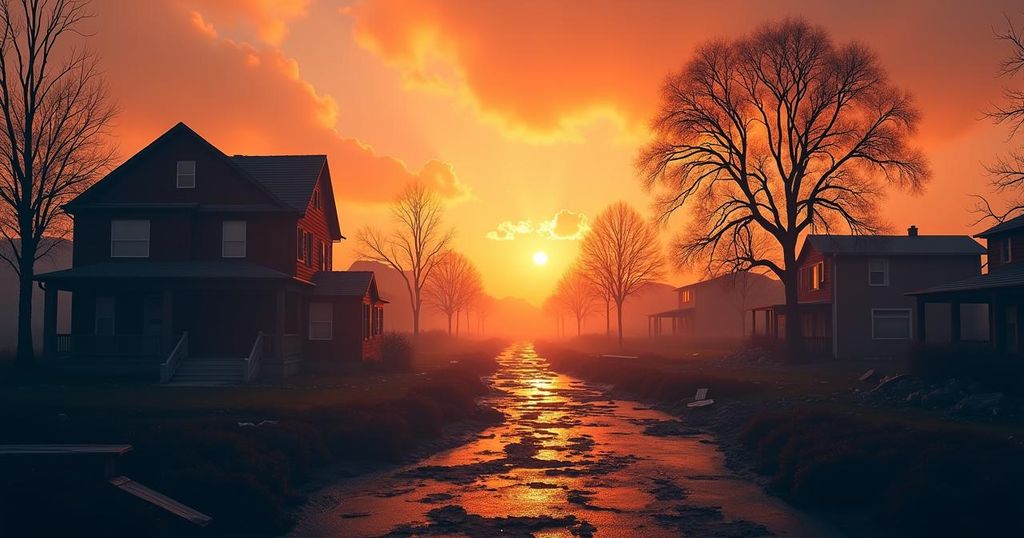Hurricane Helene: Over 210 Lives Lost as US Faces Second Deadliest Storm in Recent History
Over 210 fatalities have been reported due to Hurricane Helene, making it the second deadliest storm in the United States in over fifty years. The hurricane caused extensive flooding and destruction across several states, with President Biden pledging federal support for recovery efforts. Many residents remain unaccounted for, and the impact of climate change on storm severity has sparked significant discussion amidst the ongoing disaster response.
Hurricane Helene has been confirmed as one of the most catastrophic storms to strike the United States in recent history, resulting in over 210 fatalities as of October 3. This storm ranks as the second deadliest cyclone to impact the US mainland in the last fifty years, with President Joe Biden making multiple visits to the severely affected southeastern regions. The hurricane’s devastation has led to extensive flooding, destruction of infrastructure, and a significant loss of life, particularly in flood-prone North Carolina, where communities are described as experiencing an unprecedented disaster. The storm wreaked havoc across multiple states including North and South Carolina, Georgia, Florida, Tennessee, and Virginia. An official tally by Agence France-Presse (AFP) indicates that the majority of fatalities, specifically more than half, occurred in North Carolina, which has been severely impacted by flooding. During his visits, President Biden expressed solidarity with those affected, stating, “I see you, I hear you, I grieve with you – and I promise you, we have your back.” The scale of the hurricane’s destruction is reminiscent of Hurricane Katrina, which in 2005 resulted in 1,392 deaths. Despite extensive rescue operations involving both federal and National Guard personnel, the death toll is anticipated to rise as many individuals remain unaccounted for, especially in isolated mountainous areas. Furthermore, regions like Asheville, North Carolina, have seen significant damage, with thick mud engulfing the streets and structures collapsing along riverbanks. In response to the catastrophe, local communities in towns such as Swannanoa have demonstrated remarkable resilience, providing support to one another by cleaning roadways and distributing essential supplies. President Biden also surveyed areas such as Keaton Beach in Florida, where the hurricane made landfall as a Category 4 storm, noting the extensive destruction with homes entirely obliterated and families suffering tremendous loss. In discussions surrounding the storm, President Biden emphasized the role of climate change in exacerbating such natural disasters, arguing that skeptics of the climate crisis are disregarding undeniable evidence. Conversely, former President Donald Trump has criticized the federal response, making unfounded claims about the lack of assistance from the government to affected states. The Sierra Club has attributed the storm’s intensification to record warm water temperatures in the Gulf of Mexico, framing the event as a clear manifestation of climate change.
The devastation caused by Hurricane Helene marks a significant event in the history of natural disasters in the United States. As climate change continues to intensify weather patterns, hurricanes like Helene are becoming more frequent and severe. The socio-economic impacts following such disasters pose considerable challenges for affected states. Government responses involve a complex interplay of federal, state, and local resources aimed at effective disaster management and recovery. Understanding the dynamics of hurricanes, their causes, and consequences is critical to comprehending the current climate crisis and its far-reaching implications for communities.
In summary, Hurricane Helene’s impact has resulted in over 210 confirmed deaths, marking it as one of the deadliest hurricanes in US history. The widespread devastation has prompted federal support and community resilience, showcasing both the immediate and long-term challenges posed by climate change and natural disasters. As recovery efforts continue, the need for a comprehensive approach to disaster preparedness and climate resilience becomes increasingly evident.
Original Source: www.lemonde.fr




Post Comment